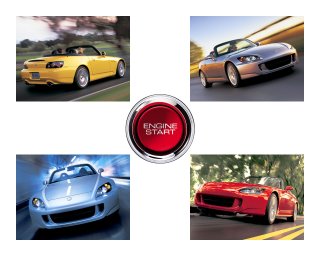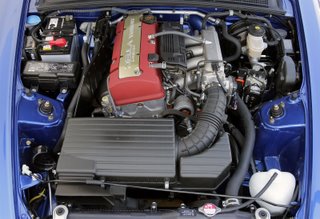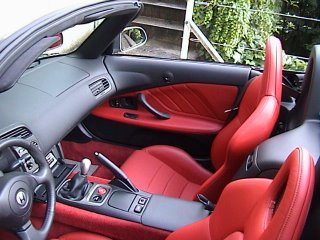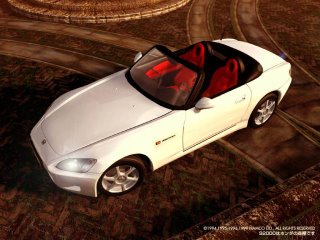 I'll start by stating what this car isn't (something this guy should read). It isn't a practical daily driver or a cushy cruiser convertible. So if that's what you're looking for, go buy a Toyota Solara. However, if what you're looking for is a legitimate, bona-fide roadster in the purest sense, look no further. This is your car.
I'll start by stating what this car isn't (something this guy should read). It isn't a practical daily driver or a cushy cruiser convertible. So if that's what you're looking for, go buy a Toyota Solara. However, if what you're looking for is a legitimate, bona-fide roadster in the purest sense, look no further. This is your car.
To say that the 2.2 (or 2.0) litre, in-line 4 VTEC engine in the S2000 is an engineering masterpiece would be a vast understatement. To illustrate this, I'll use an analogy. Pick up a heavy rock, hold it above your shoulder with a 90 degree bend at the elbow. Raise the rock above your head by extending your arm upwards and bring it back down repeatedly at a gradual rate. No sweat, right? Now, do it twice as fast many times over and your muscles, tendons and ligaments (pistons, crankshafts and connecting rods in an engine) will start to break down. The S2000's engine was meticulously designed to withstand such strain, but obviously on a much larger scale: 8,900 revolutions per minute, to be exact (8,200 in 2.2 litre version). To offer a sense of scale, most modern engines reach their maximum capacity at around 6,000-7,000 RPMs, at which point they're itching to come back down to "normal" operating levels of around 3,000-4,000 RPMs. When the S2000's engine reaches 6,000 rpms, the VTEC (Variable Valve Timing/Lift, Electronically Controlled) kicks in and the fun is just beginning, and continues for another 3,000 rpms. This alone is well worth the price of admission.

Another notable performance metric of the S2000 is horsepower output per liter. It generates 240 horsepower from a 2.0 litre engine, which equates to an impressive 120hp/liter. Even in the newer 2.2 liter versions, that's 109.9 hp/liter. Not many engines today can claim numbers even close to this. While the venerable BMW M3 at 333hp comes close, generating 104hp/liter (333hp/3.2L), it still falls short of the S2000's hp to liter ratio. To the BMW enthusiasts out there (I'm one of them), put your flamethrowers down. I'm not belittling the M3's engine, but merely using it as a performance benchmark to compare it with a car with a significantly smaller engine (2.0L vs. 3.2L) costing significantly less ($34,500 for the S and $49,000 for the M).

It's interesting to note that when I push my BMW 3 relatively hard, she's willing to oblige, but push beyond that and she respectfully asks that I take it easy, reminding me that a blown wheel bearing or control-arm will cost me (European women can be somewhat high-maintenance, what can I say). Conversely, when I push the S2000 hard (in either it's 2.0 or 2.2 engine configuration), she laughs at me hysterically and asks "is that the best you can do?" and urges me to push that much harder (at which point I happily oblige). This is truly a car designed to be driven like it's been stolen. It can best be described as a feeling that is so wrong, yet so damn right.

So what would my ideal S2000 look like? Well, I'd spring for either engine (2.0 or 2.2), as both are great and have their respective strengths and weaknesses. Color combination of white paint on red interior is a must and I'd throw some wider wheels/tires on her. My practical, responsible side is telling me that purchasing an S2000 as a second car would undoubtedly be a mistake, but my irresponsible, capricious side is telling me that it must be done (I'm currently leaning more towards the latter). Stay tuned...